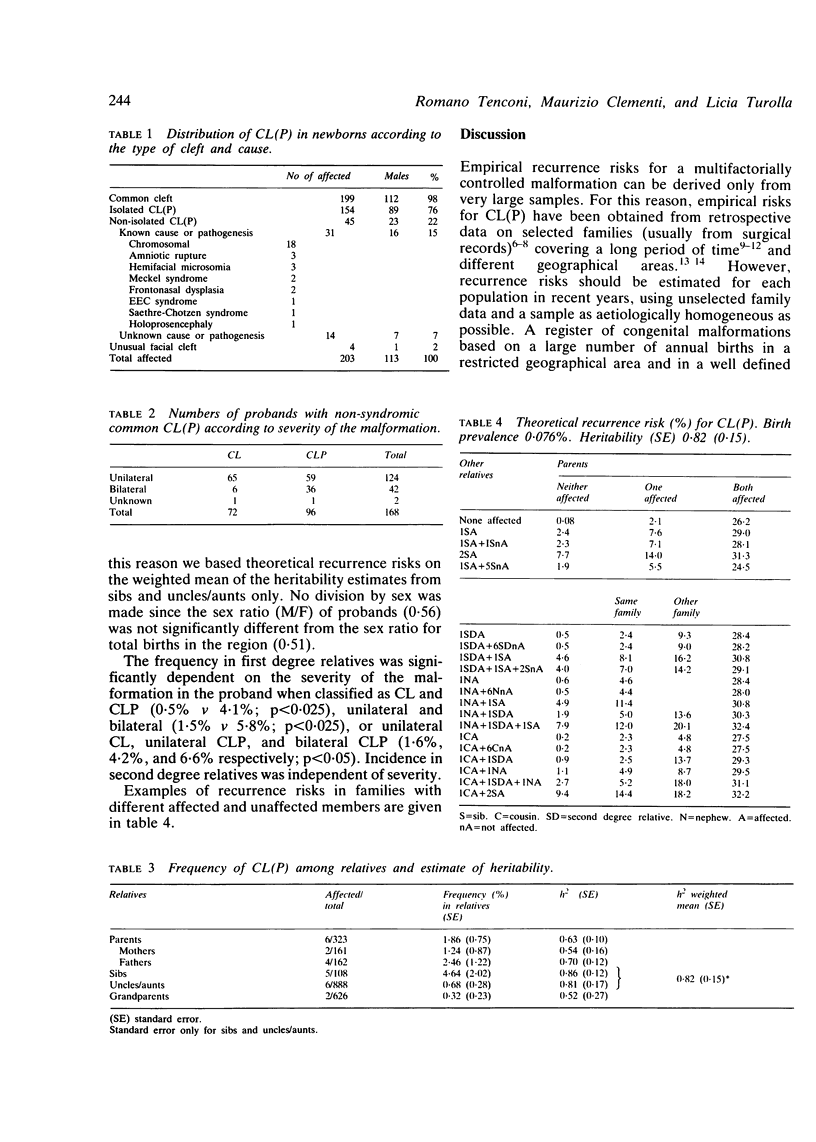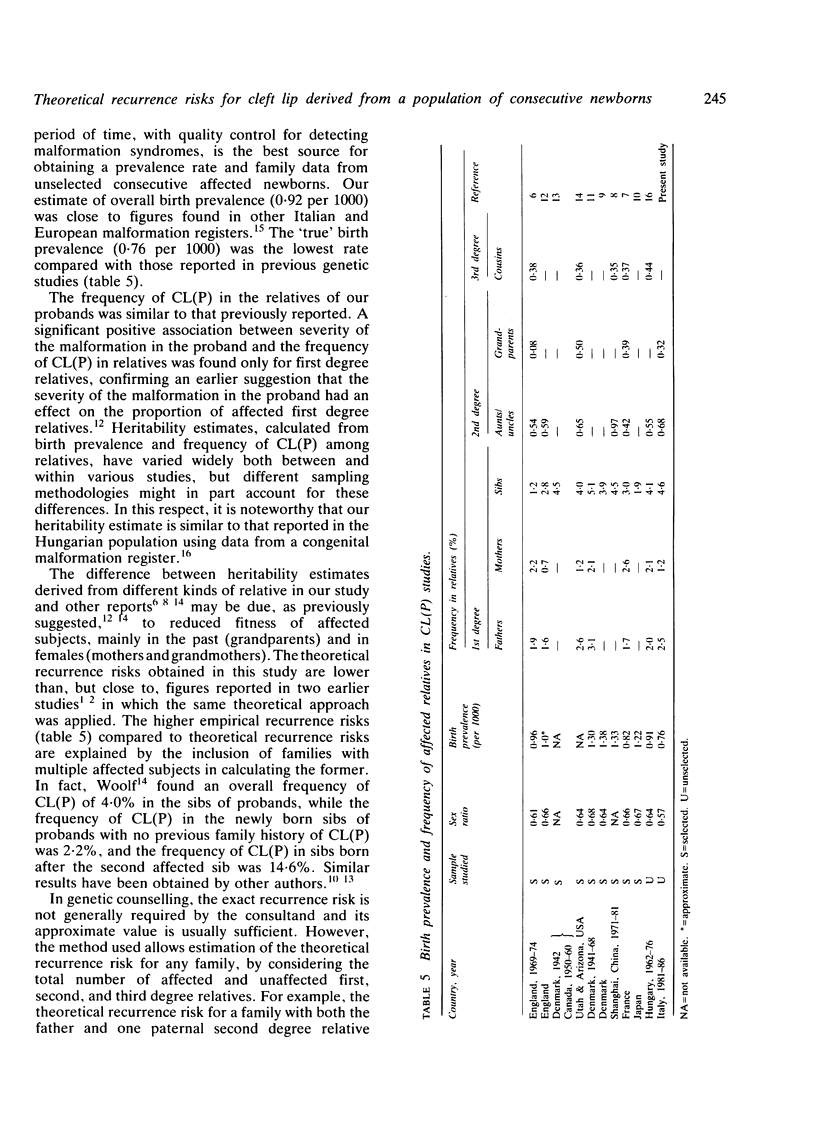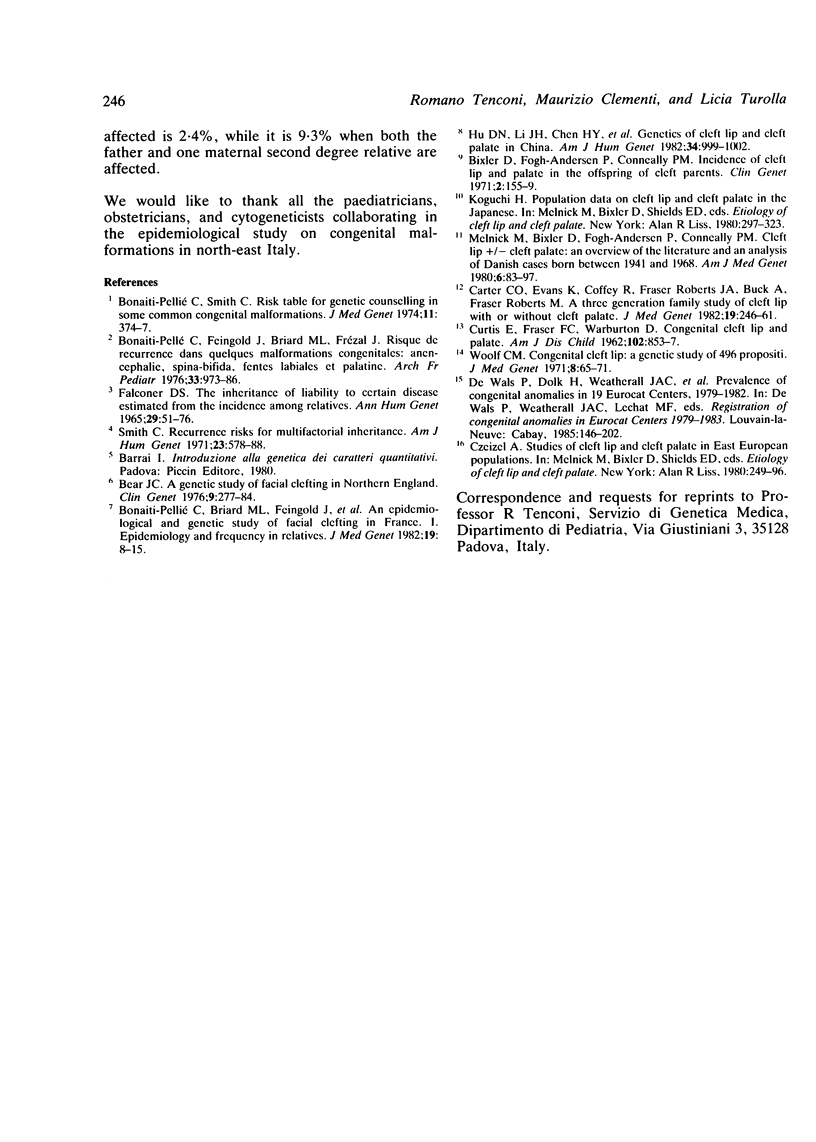Abstract
Theoretical recurrence risks for cleft lip with or without cleft palate (CL(P)) were calculated from heritability estimates derived from a population of 203 newborns with CL(P) in a total of 220,927 consecutive births in north-east Italy. Birth prevalence of CL(P) and the frequency of CL(P) in relatives of probands were estimated after exclusion of cases with CL(P) resulting from a known cause or pathogenesis. The method allowed estimation of the theoretical recurrence risk for any family by considering the total number of affected and unaffected first, second, and third degree relatives. The lower value of the theoretical risk compared to the empirical risk, obtained from retrospective data of selected families, was the result of methodological differences.
Full text
PDF



Selected References
These references are in PubMed. This may not be the complete list of references from this article.
- Bear J. C. A genetic study of facial clefting in Northern England. Clin Genet. 1976 Mar;9(3):277–284. doi: 10.1111/j.1399-0004.1976.tb01575.x. [DOI] [PubMed] [Google Scholar]
- Bixler D., Fogh-Andersen P., Conneally P. M. Incidence of cleft lip and palate in the offspring of cleft parents. Clin Genet. 1971;2(3):155–159. doi: 10.1111/j.1399-0004.1971.tb00271.x. [DOI] [PubMed] [Google Scholar]
- Bonaiti-Pellie C., Feingold J., Briard M. L., Frezal J. Risque de récurrence dans quelques malformations congénitales: anencéphalie, spina-bifida, fentes labiale et palatine. Arch Fr Pediatr. 1976 Dec;33(10):973–986. [PubMed] [Google Scholar]
- Bonaiti-Pellié C., Smith C. Risk tables for genetic counselling in some common congenital malformations. J Med Genet. 1974 Dec;11(4):374–377. doi: 10.1136/jmg.11.4.374. [DOI] [PMC free article] [PubMed] [Google Scholar]
- Bonaiti C., Briard M. L., Feingold J., Pavy B., Psaume J., Migne-Tufferaud G., Kaplan J. An epidemiological and genetic study of facial clefting in France. I. Epidemiology and frequency in relatives. J Med Genet. 1982 Feb;19(1):8–15. doi: 10.1136/jmg.19.1.8. [DOI] [PMC free article] [PubMed] [Google Scholar]
- Carter C. O., Evans K., Coffey R., Roberts J. A., Buck A., Roberts M. F. A three generation family study of cleft lip with or without cleft palate. J Med Genet. 1982 Aug;19(4):246–261. doi: 10.1136/jmg.19.4.246. [DOI] [PMC free article] [PubMed] [Google Scholar]
- Koguchi H. Population data on cleft lip and cleft palate in the Japanese. Prog Clin Biol Res. 1980;46:297–323. [PubMed] [Google Scholar]
- Melnick M., Bixler D., Fogh-Andersen P., Conneally P. M. Cleft lip+/-cleft palate: an overview of the literature and an analysis of Danish cases born between 1941 and 1968. Am J Med Genet. 1980;6(1):83–97. doi: 10.1002/ajmg.1320060108. [DOI] [PubMed] [Google Scholar]
- Smith C. Recurrence risks for multifactorial inheritance. Am J Hum Genet. 1971 Nov;23(6):578–588. [PMC free article] [PubMed] [Google Scholar]
- Woolf C. M. Congenital cleft lip. A genetic study of 496 propositi. J Med Genet. 1971 Mar;8(1):65–83. doi: 10.1136/jmg.8.1.65. [DOI] [PMC free article] [PubMed] [Google Scholar]


